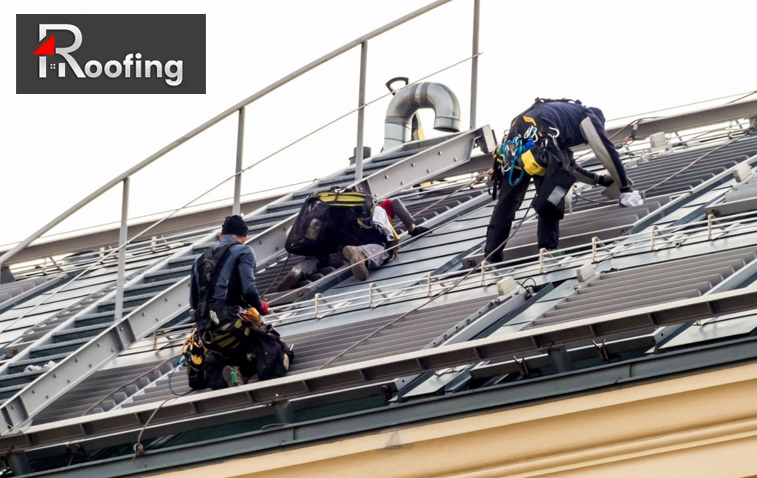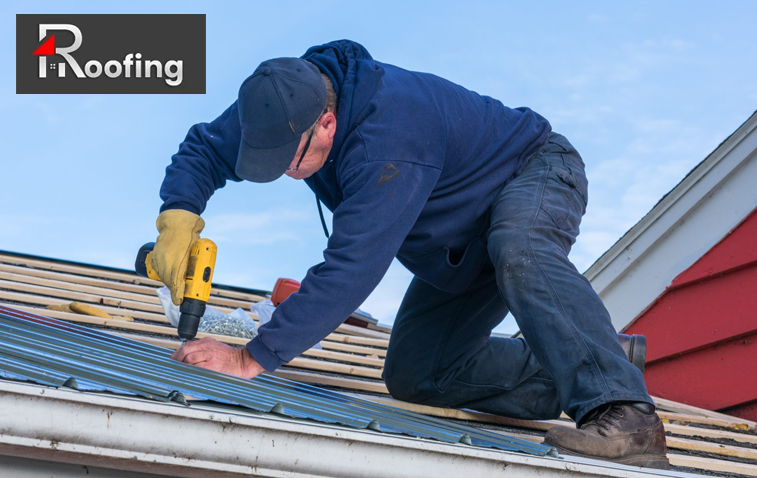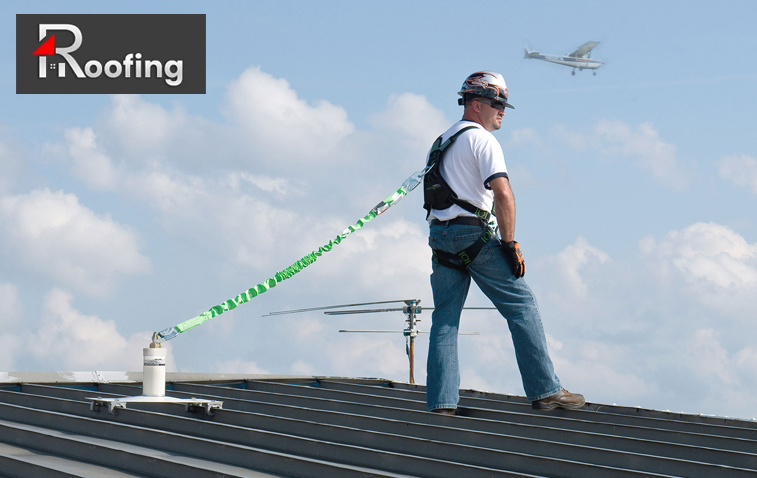Replace Wisely: 5 Signs You Need a Commercial Roof Replacement
Maintaining the integrity of a commercial roof is critical for the safety, functionality, and longevity of the building it protects. Unlike residential roofs, commercial roofs often face unique challenges due to their size, structure, and usage. Recognizing the signs that your commercial roof needs replacement can prevent extensive damage, operational downtime, and costly repairs. Here are five clear indicators that it might be time to replace your commercial roof.

Persistent leaks and water damage
One of the most obvious signs you need roof replacement for your commercial building is the presence of persistent leaks and water damage. While occasional leaks might be repairable, ongoing issues indicate deeper, systemic problems that cannot be fixed with patchwork solutions.
Indicators of water damage:
- Interior Stains and Mold: Look for water stains on ceilings and walls inside the building. Mold growth is also a significant indicator of moisture penetration.
- Pooled Water on the Roof: Flat commercial roofs often have poor drainage, leading to water pooling. Standing water exacerbates deterioration and can lead to leaks.
- Wet Insulation: If the insulation under the roofing membrane is wet, it not only loses its effectiveness but also contributes to structural decay and mold growth.
Causes of persistent leaks:
- Aging Roof: Over time, roofing materials degrade and lose their effectiveness, leading to leaks and water infiltration.
- Failed Flashing and Seals: Flashing around vents, skylights, and other penetrations can deteriorate or fail, allowing water to enter.
- Structural Issues: Sagging or damaged roof structures can cause water to pool and find its way through the roofing material.
Long-Term Effects:
- Structural Damage: Continuous water exposure can weaken the roof deck, leading to structural instability.
- Health Hazards: Mold and mildew from water damage pose serious health risks to building occupants.
- Increased Energy Costs: Wet insulation and compromised roofing reduce the building’s energy efficiency, leading to higher heating and cooling costs.
Extensive Roof Membrane Damage
The roof membrane is a crucial component of commercial roofing systems, especially for flat or low-slope roofs. Significant damage to the membrane is a strong sign that a roof replacement may be necessary.
Types of membrane damage:
- Blisters and bubbles: These occur when air or moisture gets trapped under the membrane, leading to raised areas that weaken the roofing material.
- Cracks and Splits: Cracks and splits in the membrane can result from aging, thermal expansion and contraction, or physical damage.
- Punctures and Tears: Sharp objects, heavy foot traffic, or weather events can cause punctures and tears in the membrane, compromising its integrity.
Impact of Membrane Damage:
- Water Infiltration: Damaged membranes allow water to penetrate, leading to leaks and potential structural damage.
- Reduced Insulation: Damage to the membrane can also affect the underlying insulation, reducing its effectiveness and increasing energy costs.
- Accelerated Deterioration: Once the membrane is compromised, the rate of roof deterioration can accelerate, leading to more extensive damage and the need for a complete replacement.
Inspection Tips:
- Regular Inspections: Schedule regular roof inspections to identify and address membrane issues early.
- Professional Assessment: For large or complex roofing systems, consider hiring a professional roofing contractor to assess membrane integrity.
Significant Roof Age
The age of a commercial roof is a critical factor in determining whether it needs to be replaced. Most roofing materials have a defined lifespan, after which their performance can significantly degrade.

Typical Lifespans of Common Commercial Roofing Materials:
- EPDM (Ethylene Propylene Diene Terpolymer): 20–25 years
- TPO (thermoplastic polyolefin): 15-20 years
- PVC (Polyvinyl Chloride): 20–30 years
- Modified Bitumen: 10–20 years
- Built-Up Roofing (BUR): 20–30 years
- Metal Roofing: 30–50 years
Factors Affecting Roof Longevity:
- Installation Quality: Proper installation is crucial for maximizing the lifespan of a commercial roof.
- Maintenance: Regular maintenance and timely repairs can extend the life of a roof.
- Weather Conditions: Exposure to extreme weather conditions, such as heavy rain, snow, wind, and UV radiation, can accelerate roof aging.
Indicators of an Aging Roof:
- Frequent Repairs: If you find yourself repeatedly repairing the roof, it may be more cost-effective to replace it.
- Visible Wear and Tear: Look for signs of aging, such as curling or cracking of the roofing material, granule loss, and faded color.
- Performance Decline: Noticeable declines in the roof’s performance, such as increased energy costs or difficulty maintaining indoor temperatures, are signs you need roof replacement.
Compromised structural integrity
The structural integrity of a commercial roof is vital for the safety and functionality of the entire building. Any signs of structural compromise should be addressed immediately, as they can lead to catastrophic failure if left unattended.
Signs of Structural Issues:
- Sagging or Dipping: Visible sagging or dipping in sections of the roof indicates potential structural weakness or damage to the roof deck.
- Cracks in Walls or Ceilings: Cracks in the building’s interior walls or ceilings can be a sign of shifting or compromised structural support.
- Difficulty Opening Doors or Windows: Structural shifts can cause misalignment, making it difficult to open or close doors and windows properly.
Causes of structural damage:
- Water Damage: Prolonged exposure to water can weaken the roof deck and supporting structures.
- Excessive Weight: The accumulation of snow, ice, or rooftop equipment can add excessive weight, straining the structural integrity.
- Design Flaws: Inadequate design or construction flaws can lead to structural issues over time.
Consequences of Ignoring Structural Issues:
- Safety Hazards: Compromised structural integrity poses serious safety risks to building occupants.
- Operational Disruptions: Structural failures can lead to operational downtime, affecting business continuity.
- Expensive Repairs: Delaying structural repairs can result in more extensive and costly damage, potentially requiring a full roof replacement and additional structural reinforcement.
Energy Inefficiency
A commercial roof plays a significant role in a building’s overall energy efficiency. If your building’s energy costs are rising and you’re having difficulty maintaining a comfortable indoor environment, your roof might be contributing to the problem.

Signs of an Energy-Inefficient Roof:
- High Energy Bills: An unexplained increase in heating and cooling costs can indicate poor roof insulation or ventilation.
- Inconsistent Indoor Temperatures: Difficulty maintaining consistent indoor temperatures may result from inadequate roof insulation or ventilation.
- Hot or Cold Spots: Noticeable hot or cold spots inside the building can be a sign of compromised insulation or air leaks in the roofing system.
Causes of energy inefficiency:
- Insulation Breakdown: Over time, roof insulation can degrade or become damaged, reducing its effectiveness.
- Ventilation Issues: Inadequate roof ventilation can lead to heat buildup in the summer and moisture accumulation in the winter, both of which affect energy efficiency.
- Roof Material Performance: Some roofing materials provide better insulation and reflectivity than others. An outdated or low-performing roof can contribute to energy inefficiency.
Improving Energy Efficiency:
- Upgrade Insulation: Ensure the roof has adequate and high-quality insulation to reduce heat transfer and improve energy efficiency.
- Improve Ventilation: Proper roof ventilation helps regulate temperature and moisture levels, enhancing overall energy performance.
- Choose Energy-Efficient Materials: When replacing the roof, consider materials with high reflectivity and insulating properties to enhance energy efficiency.
Conclusion
Replacing a commercial roof is a substantial investment, but recognizing the signs you need roof replacement can save you from more significant expenses and complications down the line. Persistent leaks, extensive membrane damage, significant roof age, compromised structural integrity, and energy inefficiency are all clear indicators that your commercial roof may need to be replaced. By addressing these issues proactively, you can ensure the safety, functionality, and longevity of your building, providing peace of mind and protection for years to come.




